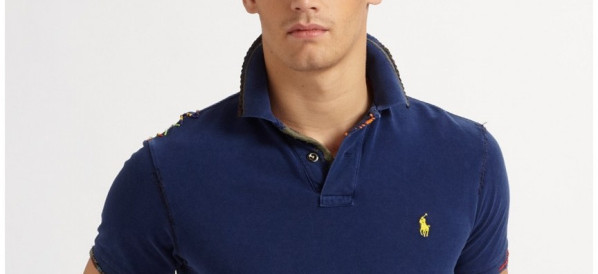 22 Terms
22 TermsHome > Terms > English (EN) > magazines
magazines
Americans have a love affair with magazines, creating thousands of periodical publications serving every taste and interest. Magazines communicate ideas, convey popular tastes and persuade the people to think, vote, behave and appear in specific ways.
The average American reads almost ten different magazine issues each month. Sixty percent of these readers are married and almost 80 percent live in a metropolitan area— with income and tastes advertisers and publishers want to reach.
Magazines have a lively tradition in the United States of exposing corruption and individual’s vices, chronicling American history, as well as informing, entertaining and persuading their readers. The power of the visual wedded to the printed word could persuade Americans that Kennedy-Camelot years were perfect, while the faces of famine in Africa aroused sympathy and paternalism. Magazines, however, like other mass media, are also businesses, selling themselves and advertising goods and services to targeted readers. With the merger climate of the 1990s, the most widely circulated American magazines were owned by a few conglomerates, like Time Warner (TW), Hearst and News Corporations (NC).
The top five US magazines in advertising revenue at the end of the century were People Weekly (TW), Sports Illustrated (TW), Time (TW), TV Guide (NC) and Newsweek (Washington Post Co.). In terms of circulation per issue, the top five include Modern Maturity (for all American Association of Retired Persons members), Reader’s Digest, TV Guide, National Geographic and Better Homes and Gardens (all associated with older readers). Time Warner thus owns the three most profitable magazines in the country Moreover, these are linked to its other media interests: TW ran a thirty-two-page advertising insert to celebrate the fiftieth birthday of Warner Brothers’ Bugs Bunny in its Time, Life, People, Fortune and Entertainment Weekly, reaching over 80 million readers.
Magazines have changed greatly over time. The first American magazines appeared in 1741– Andrew Bradford’s The American Magazine and Benjamin Franklin’s The General Magazine and Historical Chronicle. Most early magazines lasted less than three years. They lacked a large, literate population, cheap paper, technology for mass printings, means for easy distribution and a solid financial base. In the early 1800s, education, transportation, population and printing technology changed rapidly and magazines became instrumental in educating and entertaining the growing American Republic. Cheap postal rates and the ability to deliver across a greater area increased circulation. Magazines contained novels in serial form, social and political debate, fashion, advice for the home, religious and philosophical advice and travel accounts.
Major titles included The Literary Digest, Ladies Home Journal, Saturday Evening Post, Harper’s Weekly and Scribner’s Monthly.
Until the end of the First World War, magazines also took an aggressive role in social reform. Investigative reporters (muckrakers) exposed corruption in politics and industry and took on causes such as birth control, child labor, sanitation and the meat-packing industry. Their dogged pursuit of records, interviews and the truth changed the way journalists investigated tough issues.
With postwar development, collegiate readers sought H.L. Mencken’s American Mercury and George Jean Nathan’s Smart Set during the Roaring Twenties. During the 1930s, photo-filled magazines such as Look and Life were born, providing a pictorial chronicle of American culture. Along with The Saturday Evening Post, these largecirculation reviews dominated the national market until the advent of television affected the numbers of readers and advertisers. General-interest magazines that have maintained their popularity through the decades include Reader’s Digest, National Geographic and the postwar TV Guide; in 1947 Reader’s Digest became the first magazine to have a circulation of more than 9 million. News magazines such as Time, Newsweek and U.S.
News and World Report have also had large circulation figures, but must compete with other information sources.
Magazines in the new millenium succeed when they attract the market niche for which they are positioned. In addition to general consumer magazines and news, the largest categories of magazines (with examples) are trade journals reflecting specific economic niches; sponsored publications (American Legion, college alumni magazines); sports; sex (Playboy, Penthouse); intellectual/ opinion (Commentary, The National Review, The Nation); humor (National Lampoon, MAD); business (Forbes, Business Week); religion (Christian Century, Focus on the Family); teens; and city publications (New York, Philadelphid). Large markets are also gendered into “women’s” interest (Good Housekeeping, McCall’s) and men’s interest (Gentleman’s Quarterly, Argosy), as well as gay and lesbian interest. Magazines targeting blacks and Hispanics suggest the normative readers of other magazines. The Gale Directory of Publications and Broadcast Media (1998) includes 7,141 trade/technical/professional publications, 2,591 magazines of general circulation, 459 religious, 391 agricultural, 208 college, 177 women’s, 154 foreign language, 61 fraternal, 56 Hispanic, 38 Jewish and 29 black publications. There are also roughly 10,000 company and technical publications.
Various milestones in postwar American magazine publishing reflect changing market demands and consumer trends. The satirical MAD, targeting advertising and media, was founded in 1952. Playboy appeared in 1953 with Marilyn Monroe as its first centerfold.
People magazine—sold in newspaper checkout lines—appeared in 1974 with glitzy pictures in the Life tradition, but more celebrity gossip. Cosmopolitan and Ms also challenged “women’s” publications in the 1970s. Meanwhile, Life, Look and Saturday Evening Post disappeared, victims of television and more media choices. By contrast, Vanity Fair, a magazine that had enjoyed decades of popularity before dying in 1936, was revived in 1983; it continues to set trends for an affluent society Other milestones refer to business. Advertising constitutes almost half of the economic basis for most magazines. Key sources of advertisement revenue include automobiles, cosmetics, direct response, business, food, pharmaceuticals, fashion, tourism, computers, alcohol and tobacco. The Audit Bureau of Circulation provides circulation information to advertisers, stockholders and the magazine industry itself.
Circulation and subscriptions account for the other half. The prices of magazines have skyrocketed with increasing costs of printing, paper, delivery services and salaries.
However, the cost of actually producing the magazine has fallen with the advent of desktop publishing methods and some other technological advancements.
Since the 1980s, niche marketing of magazines has sought to deliver the demographic and psychographic audience publishers and advertisers want. Demographic information such as age, educational and income level, geographic location and sex helps advertisers and editorial directors plan content for readers. Information about readers’ values and lifestyles (VALS and VALS 2) also helps deliver the audience to writers and advertisers.
Publications failing to respond to market demand cease, despite generations of tradition like The Saturday Evening Post, whose Norman Rockwell covers once epitomized smalltown nostalgia. Magazines also target audiences and geographic regions through special editions. Advertisements for local and regional clients as well as articles appropriate for a target audience (e.g. Latinos) or region (e.g. tobacco farmers in the South) attempt to increase circulation and revenues.
In the 1990s, electronic magazines began to appear. This development has increased access to information and editorial content in colleges, libraries and among those with electronic access. They also stretch form and expression within writing and illustration, as well as intersecting with emergent commercialism on the Web.
- Part of Speech: noun
- Synonym(s):
- Blossary:
- Industry/Domain: Culture
- Category: American culture
- Company: Routledge
- Product:
- Acronym-Abbreviation:
Other Languages:
Member comments
Terms in the News
Billy Morgan
Sports; Snowboarding
The British snowboarder Billy Morgan has landed the sport’s first ever 1800 quadruple cork. The rider, who represented Great Britain in the 2014 Winter Olympics in Sochi, was in Livigno, Italy, when he achieved the man-oeuvre. It involves flipping four times, while body also spins with five complete rotations on a sideways or downward-facing axis. The trick ...
Marzieh Afkham
Broadcasting & receiving; News
Marzieh Afkham, who is the country’s first foreign ministry spokeswoman, will head a mission in east Asia, the state news agency reported. It is not clear to which country she will be posted as her appointment has yet to be announced officially. Afkham will only be the second female ambassador Iran has had. Under the last shah’s rule, Mehrangiz Dolatshahi, a ...
Weekly Packet
Language; Online services; Slang; Internet
Weekly Packet or "Paquete Semanal" as it is known in Cuba is a term used by Cubans to describe the information that is gathered from the internet outside of Cuba and saved onto hard drives to be transported into Cuba itself. Weekly Packets are then sold to Cuban's without internet access, allowing them to obtain information just days - and sometimes hours - after it ...
Asian Infrastructure Investment Bank (AIIB)
Banking; Investment banking
The Asian Infrastructure Investment Bank (AIIB) is an international financial institution established to address the need in Asia for infrastructure development. According to the Asian Development Bank, Asia needs $800 billion each year for roads, ports, power plants or other infrastructure projects before 2020. Originally proposed by China in 2013, a signing ...
Spartan
Online services; Internet
Spartan is the codename given to the new Microsoft Windows 10 browser that will replace Microsoft Windows Internet Explorer. The new browser will be built from the ground up and disregard any code from the IE platform. It has a new rendering engine that is built to be compatible with how the web is written today. The name Spartan is named after the ...
Featured Terms
Ralph Lauren
Ralph Lauren is a fashion designer from the United States who is best known for the Ralph Lauren Polo brand. He got his training in the clothing ...
Contributor
Featured blossaries
pmss1990
0
Terms
1
Blossaries
0
Followers
Medecine: Immunodeficiency and pathophysiology
 22 Terms
22 Terms
Browers Terms By Category
- Electricity(962)
- Gas(53)
- Sewage(2)
Utilities(1017) Terms
- Hats & caps(21)
- Scarves(8)
- Gloves & mittens(8)
- Hair accessories(6)
Fashion accessories(43) Terms
- General boating(783)
- Sailboat(137)
- Yacht(26)
Boat(946) Terms
- Cooking(3691)
- Fish, poultry, & meat(288)
- Spices(36)
Culinary arts(4015) Terms
- Hand tools(59)
- Garden tools(45)
- General tools(10)
- Construction tools(2)
- Paint brush(1)



